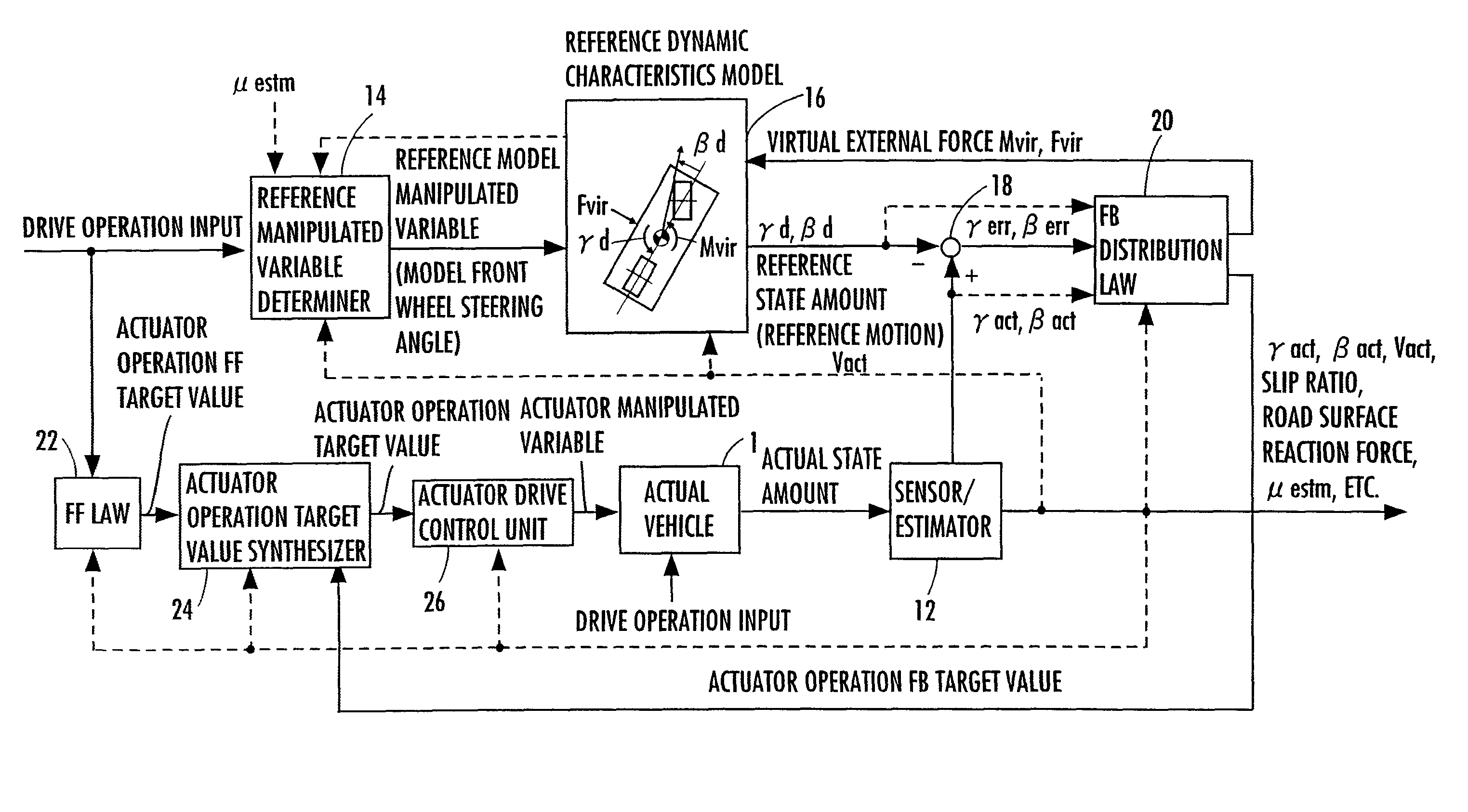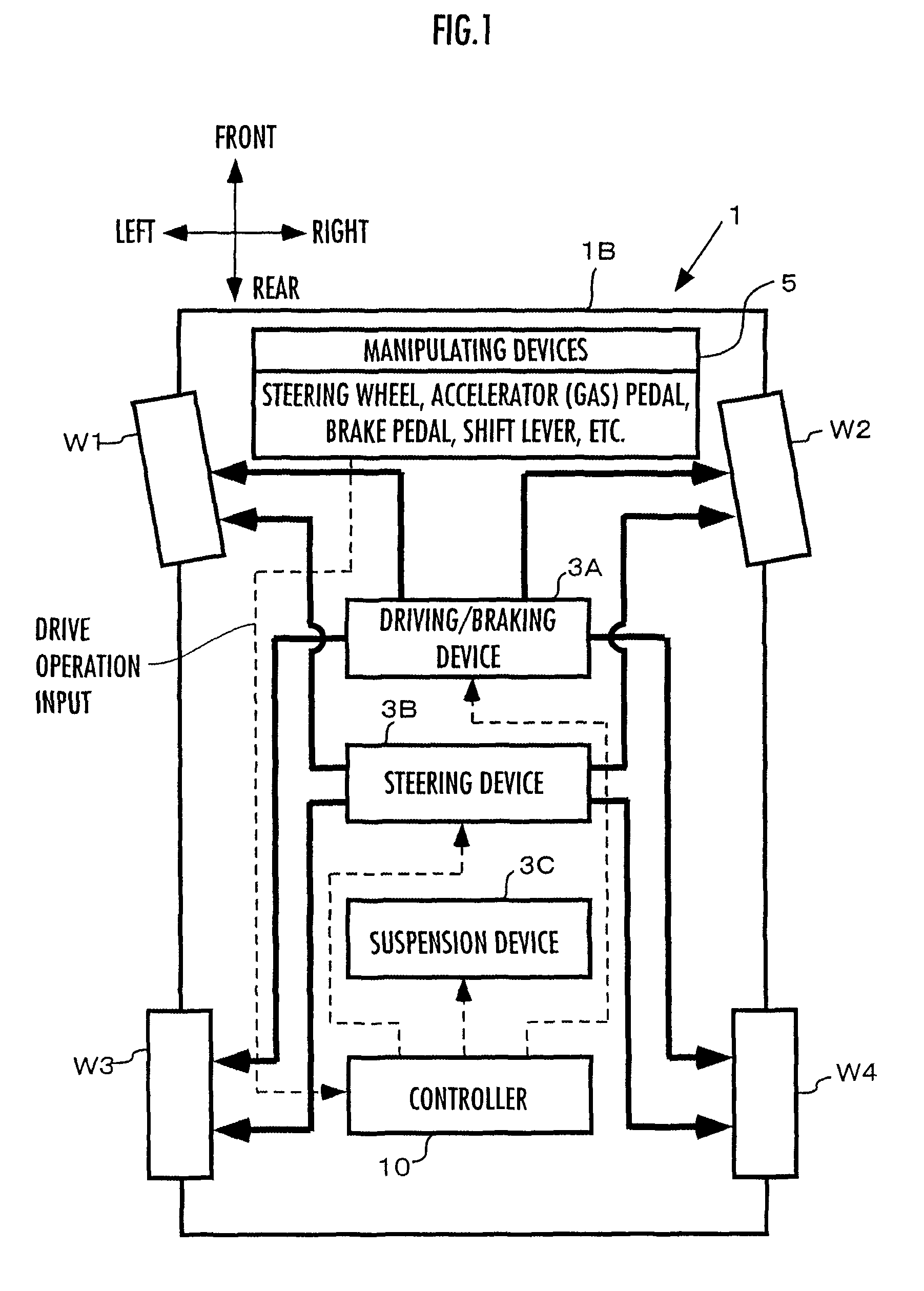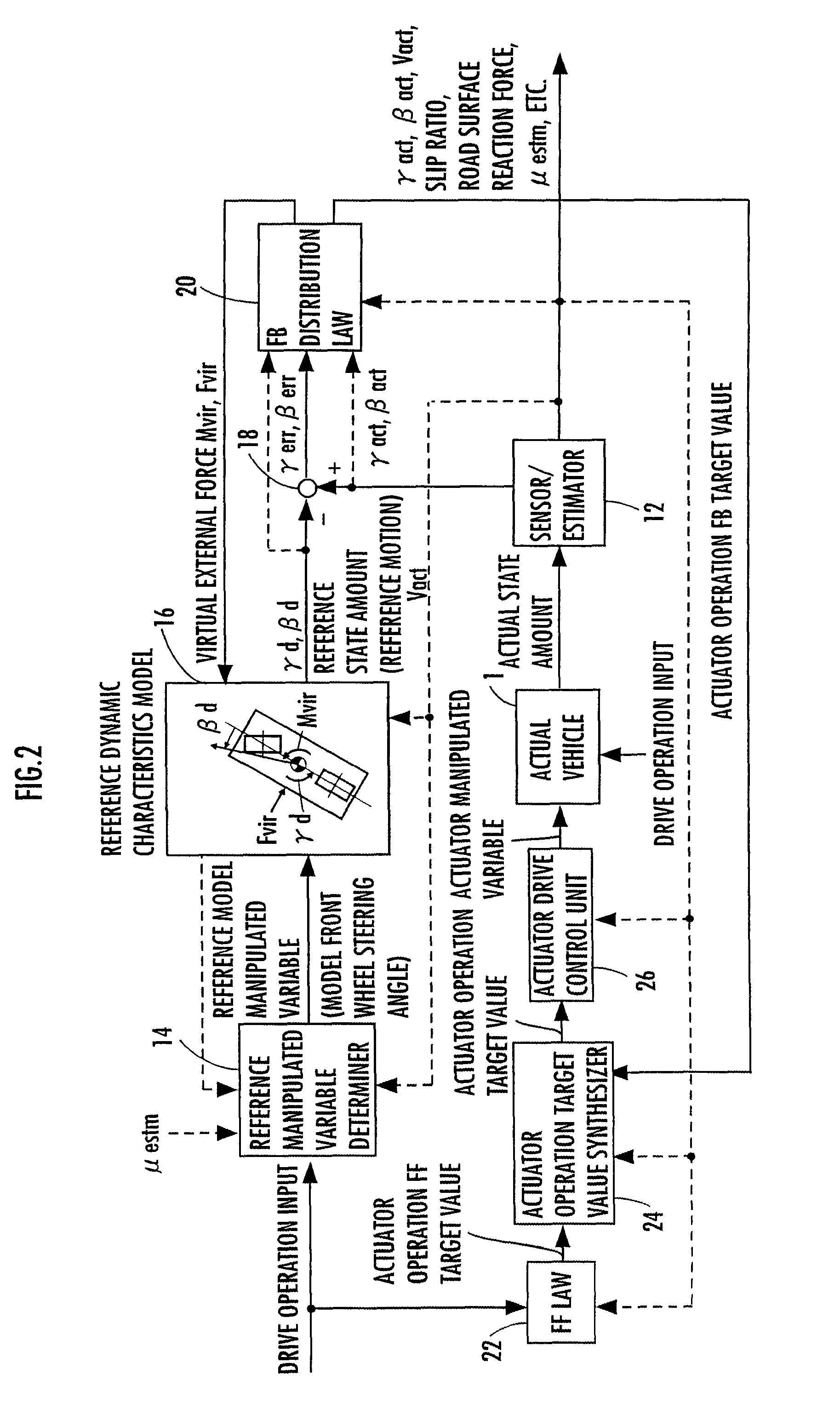Vehicle control device
a control device and vehicle technology, applied in underwater vessels, non-deflectable wheel steering, brake components, etc., can solve the problems of difficult technique, large discrepancy between the response characteristic and the response characteristic of the state amount of the actual vehicle and the required manipulated variable of the actuator device for making the state amount of the actual vehicle follow the state amount on the dynamic characteristic model
- Summary
- Abstract
- Description
- Claims
- Application Information
AI Technical Summary
Benefits of technology
Problems solved by technology
Method used
Image
Examples
first embodiment
[0063]The control processing by a controller 10 in a first embodiment will now be schematically described with reference to FIG. 2. FIG. 2 is a functional block diagram illustrating an overview of the entire control processing function of the controller 10. In the description from now on, a real vehicle 1 will be referred to as an actual vehicle 1.
[0064]The portion excluding the actual vehicle 1 in FIG. 2 (more precisely, the portion excluding the actual vehicle 1 and sensors included in a sensor / estimator 12, which will be discussed later) corresponds to the primary control processing function of the controller 10. The actual vehicle 1 in FIG. 2 is provided with the driving / braking device 3A, the steering device 3B, and the suspension device 3C described above.
[0065]As illustrated, the controller 10 is equipped with, as its main processing function components, the sensor / estimator 12, a reference manipulated variable determiner 14, a reference dynamic characteristic model 16, a sub...
second embodiment
[0388]The following will describe a second embodiment of the present invention. The present embodiment differs from the aforesaid first embodiment only in the characteristics adjusting matrix K for adjusting the transient response characteristic of a model vehicle. Hence, the explanation will be focused mainly on the different aspect, and the explanation of the same construction and the same processing as those in the first embodiment will be omitted.
[0389]The aforesaid first embodiment has shown an example wherein k2 out of the model characteristics adjusting parameters k1 and k2, which are the diagonal components of the characteristic adjusting matrix K of the expression 01, has been variably set according to the traveling velocity Vact (=Vd) and k1 has been fixed to “1” in order to enhance the attenuation properties of the state amounts γd and βd of the model vehicle based on stepped changes in the steering angle θh.
[0390]In contrast to this, according to the present embodiment, ...
third embodiment
[0396]A third embodiment of the present invention will now be described. The present embodiment differs from the aforesaid first embodiment or the second embodiment only in the characteristics adjusting matrix K for adjusting the transient response characteristic of a model vehicle. Hence, the explanation will be focused mainly on the different aspect, and the explanation of the same construction and the same processing as those in the first embodiment or the second embodiment will be omitted.
[0397]In the first embodiment and the second embodiment, only one of the model characteristics adjusting parameters k1 and k2 of the characteristics adjusting matrix K of the aforesaid expression 01 has been variably set in order to enhance the attenuation properties of the state amounts βd and γd of the model vehicle based on stepped changes in the steering angle θh. In this case, if the traveling velocity Vact (=Vd) is higher than the critical braking velocity Vd_critical, then the absolute v...
PUM
 Login to View More
Login to View More Abstract
Description
Claims
Application Information
 Login to View More
Login to View More - R&D
- Intellectual Property
- Life Sciences
- Materials
- Tech Scout
- Unparalleled Data Quality
- Higher Quality Content
- 60% Fewer Hallucinations
Browse by: Latest US Patents, China's latest patents, Technical Efficacy Thesaurus, Application Domain, Technology Topic, Popular Technical Reports.
© 2025 PatSnap. All rights reserved.Legal|Privacy policy|Modern Slavery Act Transparency Statement|Sitemap|About US| Contact US: help@patsnap.com



